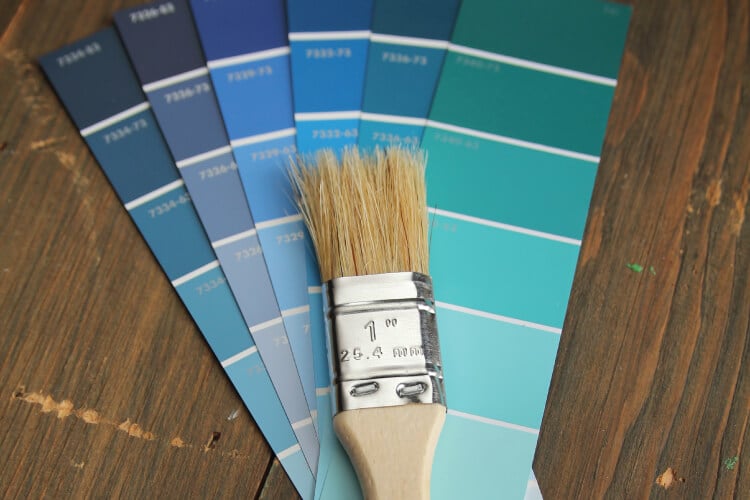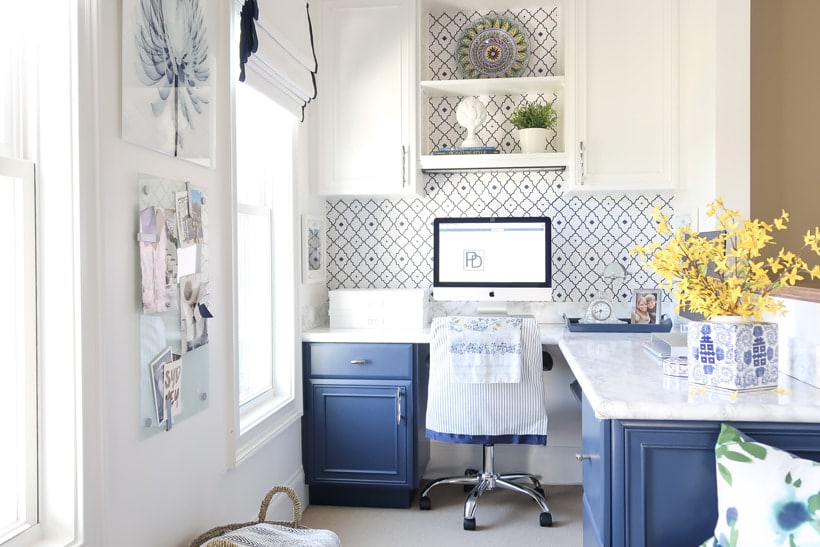If it hardens entirely, sand it smooth. Sand all surface areas with the grain using 100-grit paper. To make sure no bits of dust mar the finish, vacuum the cabinets inside and out, then rub them down with a tack cloth to catch any particles that the vacuum misses. Dee says, "Hand sanding is the very best strategy on oak because you can push the paper into the open grain, which a power sander or sanding block will miss. Cabinet Painting 28202." When using a tack fabric, unfold each brand-new fabric fully, to one layer, then crumple it to get the best dust collection surface.
However they just sink into open-grained woods such as oak, ash, mahogany, or hickory. Brushing putty, the pudding-thick, oil-based coating Dee utilized on these oak cabinets, fills the grain as it primes the wood. A number of cautions: It must be applied with a good-quality nylon-polyester brush, which you'll have to discard after each coat.
/cdn.vox-cdn.com/uploads/chorus_asset/file/19496470/00_paint_cabinets_xl_banner.jpg)
Beginning at the top of the cabinet, brush on the guide or brushing putty throughout the grain, then "tip off" pass the brush gently over the damp finish in the direction of the grain (Cabinet Painting Contractors 28277). Always tip off in a single stroke from one end to the other. Provide it a day to dry.

Sand any profiled surfaces with a medium-grit sanding sponge. When you're done, everything should be glass-smooth. Follow the hidden structure of the cabinet or door with the brush. Where a rail (horizontal piece) butts into a stile (vertical piece), for circumstances, paint the rail initially, overlapping a little onto the stile.
Some Known Factual Statements About Painting Kitchen Cupboards - Top Tips & Cabinet Painting Contractors 28217 Mistakes To Avoid ... Cabinet Painters 28210
Where a stile butts into a rail, paint the stile first. Squeeze a thin bead of latex caulk into any open joints. Pull the idea as you go, then smooth the caulk with a wet finger. Fill any little dents, scratches, or dings with vinyl spackle, smoothed flat with a putty knife.
Spot-prime the spackle, and any spots where the brushed-on guide is "burned through," with a spray can of fast-drying oil-based guide. Wait an hour, then sand the primer lightly with 280-grit paper. Vacuum all surface areas, and wipe with a tack fabric. The hole in a caulk tube's pointer must be no larger than the tip of a sharp pencil.
Work from top to bottom, using the paint throughout the grain, then tipping it off with the grain. For cabinet interiors, use the paint with a smooth-surface mini roller, which leaves a slight orange-peel texture. Sand all surface areas with 280-grit paper, then vacuum and clean with tack fabric. Cabinet Painting 28278. For the last coat, break out a brand-new brush.
Brushes select up dust, so constantly put paint into a separate container to prevent contamination of the paint in the can. If any paint is left over, pour it back into the can just through a fine-mesh strainer. The method for prepping and painting doors, drawers, and shelves is the very same as on the cabinets, other than that all the work is done on a table to lower the possibility of drips, runs, and droops. Cabinet Painters 28213.
Getting My The 3 P's Of How To Paint Cabinets — Blackbeak Studios To Work
Follow the same prep sequence when it comes to cabinetsclean with deglosser, fill the holes, sand, vac, and tackand the very same priming series: in this case, 2 coats of brushing putty. Smooth the flat surface areas on the panel and the frame with a random-orbit sander. On bevels or profiles, use effort and a medium-grit sanding sponge.

When priming or painting paneled doors, brush in the list below series to get the best-looking surface in the least amount of time: start with the area around the panel, then do the main field of the panel, then end up with the stiles and rails around the edges. As you go, wipe up any paint that winds up on surrounding dry surfaces. Cabinet Painters 28204.

After vacuuming and adding all the surface areas, spray a fast-dry primer on any areas with spackle or bare wood where the sandpaper "burned through" the primer. Wait an hour before sanding - Cabinet Painters 28215. Remove all dustfirst with a vacuum, then with a tack clothand apply the surface coat. Suggestion it off with the grain.
Vacuum and tack every piece, then brush on the last coat. To prevent drips on outside edges, pull the brush toward them. To avoid drips in corners, first discharge the brush by removing the paint, then paint by pulling the brush away from the corner. If a drip laps onto a dry surface area, clean it up right away.
The 5-Second Trick For This Is How To Paint Kitchen Cabinets Like A Pro
John Dee, a perfectionist, chooses to do one side at a time, keeping the faces flat so they don't get runs. However that's two days of drying time per doorone day per side. Here's his method for painting both sides in a day. Twist 2 screw hooks into holes drilled in an unnoticeable door edge (the lower edge for bottom cabinets, the upper edge for leading cabinets).